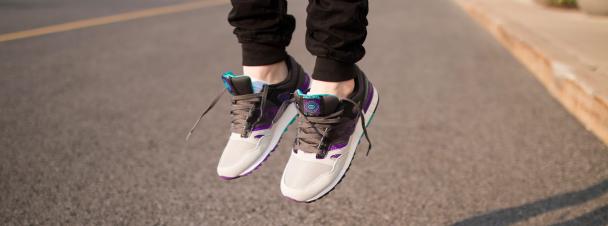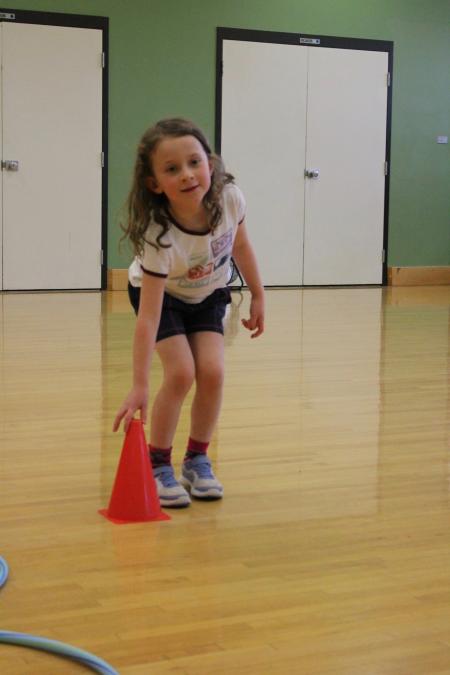Nurturing Physical Literacy in Children

Previously published Volume 84, Issue 1
Children today have more options when it comes to organized sports than ever before. The Canadian Fitness & Lifestyle Research Institute (2015) reports that 77% of children between the ages of 5 and 19 participate in at least one organized sport. Ironically, the high level of participation in organized sports does not correspond to actual physical activity involvement. Statistics Canada data (2015) from the last decade suggests that only about 10% of children (13% of boys and 9% of girls) between the ages of 5 and 17 are meeting the 60 minutes of moderate to vigorous physical activity per day guideline outlined by the Canadian Society for Exercise Physiology (CSEP), ParticipACTION and the Public Health Agency of Canada (PHAC) (Tremblay et al., 2011).
Ensuring that children participate in enough physical activity for proper growth and development may require more than simply offering opportunities for organized sport. In order to promote sustained physical activity, coaches, educators, parents, and other caregivers should strive to develop children’s physical literacy. Physical literacy encompasses motivation, confidence, knowledge and understanding as it relates to the pursuit of lifelong physical activity (Whitehead, 2010). Educators are aware of the importance of physical literacy and enthusiastically seek ways to promote physical literacy in their gymnasia.
Learning interactions that develop physical literacy should have motivation at the core (Haydn-Davies, 2010). Motivation refers to the extent to which children engage in positive behaviors, not because of coercion but because they enjoy and value the activity. Ryan and Deci (2017) refer to this as intrinsic motivation, which they argue best supports sustained involvement in a particular activity. Educators can nurture intrinsic motivation by providing opportunity for autonomy, competence and relatedness (Ryan & Deci, 2017). Here are a few easy ways that educators can incorporate autonomy, competence and relatedness into their instruction.
Autonomy
In order to foster autonomy and give children the opportunity to take charge of their learning they need to be able to take the wheel every so often. This does not mean that educators completely relinquish control and that children have a free-for-all; rather, it means that students are allowed to experience choice within structure. Educators can incorporate student choice by allowing children to choose between several different activities, each equally grounded in the program of studies. For instance, children in grades four to six may choose between a jumping game, a balance game, and a throwing game. Each of the three games link to locomotor, non-locomotor, and manipulative skill outcomes. Educators do not have to stop with the type of activity that they choose. Choice can be extended to the length of activity as well. A child may only want to partake in the jumping activity for a short time and then move on to another activity, while another child may want to partake in the jumping activity for the entire duration of the class. El-Sherif (2014) points to the benefits of student voice and student choice when it comes to promoting physical activity participation, she writes, “if it is kid suggested, it is kid approved.” (El-Sherif, 2014, p. 11)
Competence
Competence is the ability to master a task and is foundational to the development of physical literacy (Whitehead, 2010). Educators should create an environment that can support and scaffold positive physical activity behaviors. The activities that educators plan should be challenging, but not so challenging that the children repeatedly fail (Balyi, Way, & Higgs, 2013). Educators may consider starting their lessons with a simple activity and progress to more complex versions of the activity. A perfect example of this is the Island Jumping game. Children play the Island Jumping game with mats or hula-hoops that are scattered in a gymnasium. The mats represent island and the spaces represent the water. The object of the game is to jump to all the islands without falling in the water. First, the educator places the mats close enough together so children can jump from one to the other mat. To progress and make the game more challenging, the educator moves the islands further apart. Instead of moving the island further apart, the educators can prompt their children to practice more challenging jumps (e.g. with two feet and then landing on only one foot). The ability to perform the simple jumps has a positive effect on the children’s confidence, which incentivizes children to hone jumps that are more difficult.
Relatedness
Relatedness refers to the the ability to relate to others, including peers, family, teachers and society (Ryan & Deci, 2017). In physical education, children best relate to children that are likeminded and of similar ability. A word of caution, promoting relatedness does not mean segregating children into uniform groups; there are many benefits to having children of various skills levels and personalities interact and collaborate. Educators may instead want to promote relatedness through student-choice (autonomy). As previously mentioned, allowing students to choose between pre-determined activities empowers them to engage and put them in charge of their learning. In addition, the choice of activity also naturally groups them by like-mindedness and ability level. Educators may wish to take it one step further and allow students to choose a partner with whom they complete each of the activities.
The relationship that children have with the educator is as important as the relationships they have with their peers. In recognition of this, educators may want to seek out opportunities to develop and strengthen the relationships they have with each of the children. Educators can partner up for a brief activity or game that is selected by the child. This will give the child the opportunity to demonstrate his or her competence and enhance the bond between educator and child.

Summary
Motivation is an important pillar in the development of physical literacy and lifelong involvement in physical activity. By providing students with choice, proper scaffolding to build competence, and the opportunity to develop strong relationships, educators can make a big difference in how children come to value and enjoy physical activity. Instructional strategies that focus on the ingredients of motivation will help to turn the tide on physical inactivity rates.









